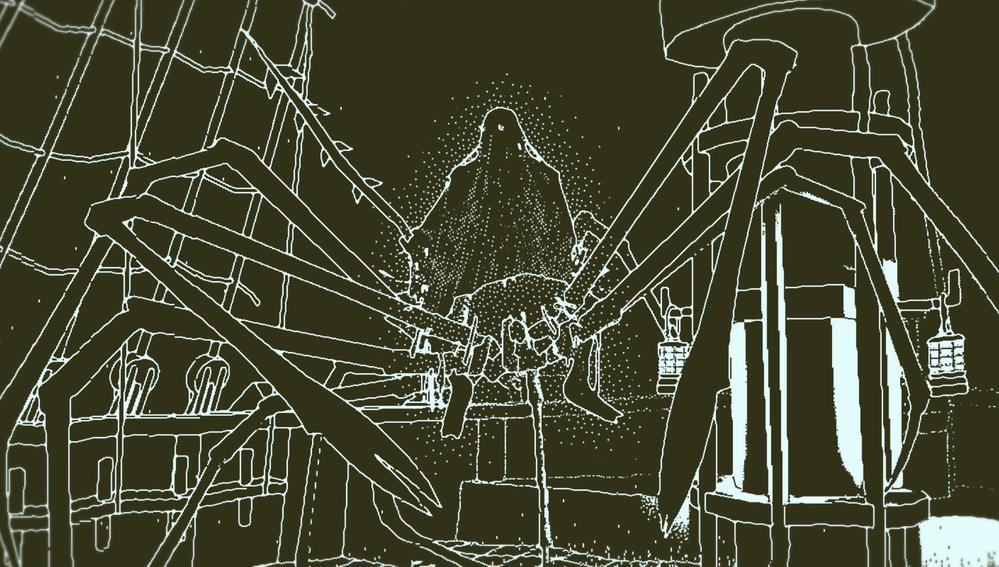Return of the Obra Din is an interesting game. For one it provides players with no instructions from the get-go, relying on players to figure out the mechanics of the game on their own. This works to immerse players into the role of an insurance investigator (the player does not know this until it is revealed at the end of the game). Personally, I felt as if the gameplay was the next evolution to the board game, Clue, but on a grandiose scale. As I was playing, I felt captivated by the shroud of mystery that surrounded the tragedy of the crew, from friends turning on friends, a Kraken crushing a captain’s lover, to figures riding giant crabs killing crew mates, every twist and turn had a profound impact.
With such unique plot points and gameplay elements, I kept wondering why I had a feeling of deja-vu whilst playing a game that I had never heard of prior to taking this course. And then it hit me: Frankenstein. For those who do not know, the story of Marry Shelley’s, Frankenstein, begins with letters from a crew-mate aboard a ship in the Arctic, trying to uncover the mystery behind Victor Frankenstein and a mysterious creature. Despite being very different mediums, both share the same tonal elements of nautical mysteries.

Having a sense of familiarity with the tone of Return of the Obra Din proved to be very influential as it helped guide me in my play-through and showed me what to look for. I knew exactly how the game wanted me to feel in regard to the mysterious tone and specific events such as the captains death or the crab riding maniacs. I expected this game to throw me for a loop and it did. This interesting personal dynamic between Frankenstein and Return of the Obra Din goes to show how well various forms of media can complement and even supplement eachother.

I really like how you drew a connection between the tonal characteristics of Return of the Obra Din and Frankenstein. This is a very interesting connection that I have never thought of before, even though Frankenstein is one of my favorite novels. Yet, I think that there is a narrative subtlety in Frankenstein, which pertains to the fact that it contains multiple layers of stories, which adds to its mysterious nature. I would propose that Return of the Obra Din achieved the same effect as well, precisely through utilizing the player as the provider of a different level of narrative that overarches the game narrative, through revealing an unknown fact about the character we play and identify as ourselves, and knocking us out of his narrative to be in our own perspectives again.
I agree with Runtong and hulajack and it is interesting that you made a connection to fiction here. You note that Frankenstein was epistolary and, as The Return of the Obra Din did, relied heavily on embedded narrative. I think this game is a perfect example of this narrative device. Jenkins used a detective investigation as an example to explain this concept, and in this game, the tax clerk is exactly the detective! I don’t, however, necessarily agree with the nautical mystery part.